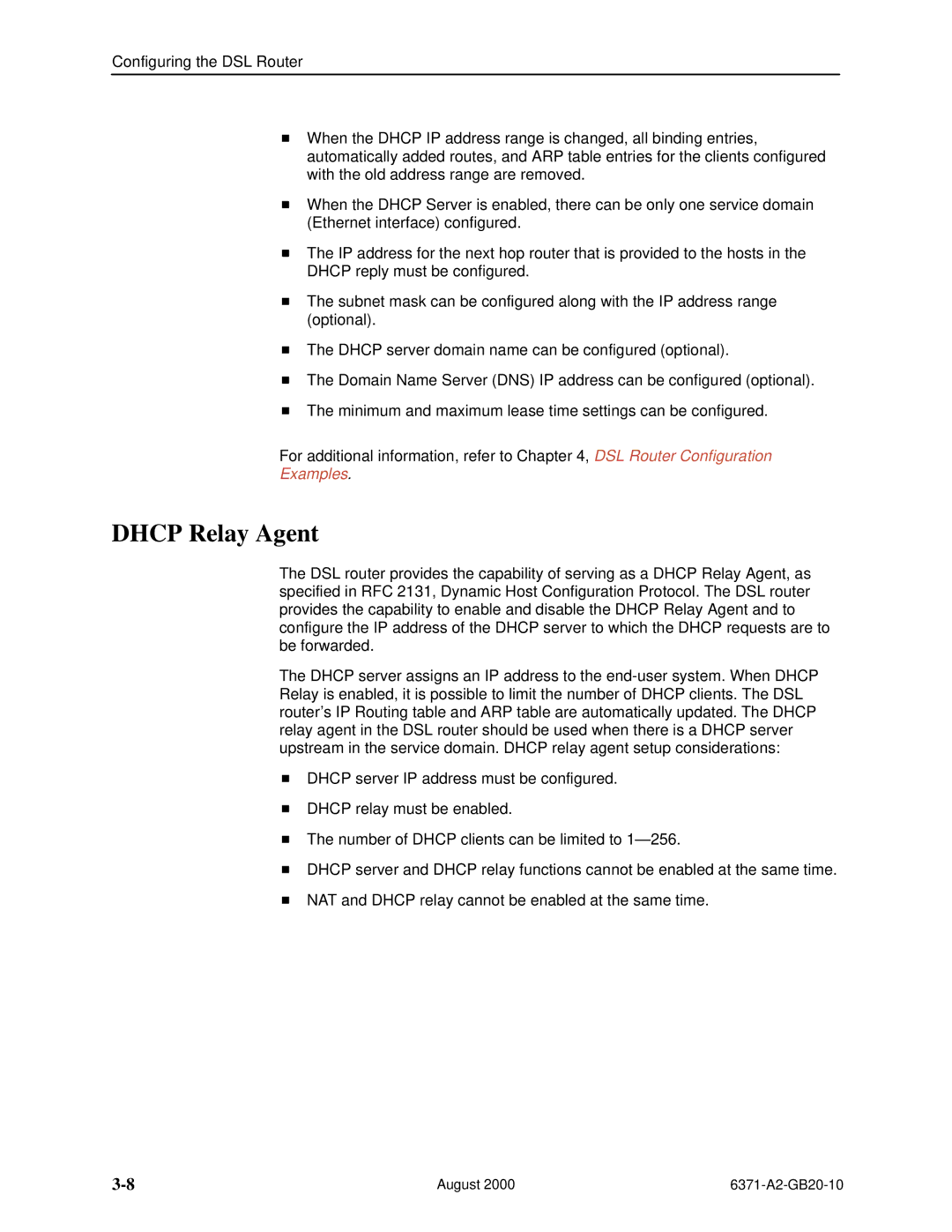Configuring the DSL Router
HWhen the DHCP IP address range is changed, all binding entries, automatically added routes, and ARP table entries for the clients configured with the old address range are removed.
HWhen the DHCP Server is enabled, there can be only one service domain (Ethernet interface) configured.
HThe IP address for the next hop router that is provided to the hosts in the DHCP reply must be configured.
HThe subnet mask can be configured along with the IP address range (optional).
HThe DHCP server domain name can be configured (optional).
HThe Domain Name Server (DNS) IP address can be configured (optional).
HThe minimum and maximum lease time settings can be configured.
For additional information, refer to Chapter 4, DSL Router Configuration
Examples.
DHCP Relay Agent
The DSL router provides the capability of serving as a DHCP Relay Agent, as specified in RFC 2131, Dynamic Host Configuration Protocol. The DSL router provides the capability to enable and disable the DHCP Relay Agent and to configure the IP address of the DHCP server to which the DHCP requests are to be forwarded.
The DHCP server assigns an IP address to the
HDHCP server IP address must be configured.
HDHCP relay must be enabled.
HThe number of DHCP clients can be limited to 1Ð256.
HDHCP server and DHCP relay functions cannot be enabled at the same time.
HNAT and DHCP relay cannot be enabled at the same time.
August 2000 |
